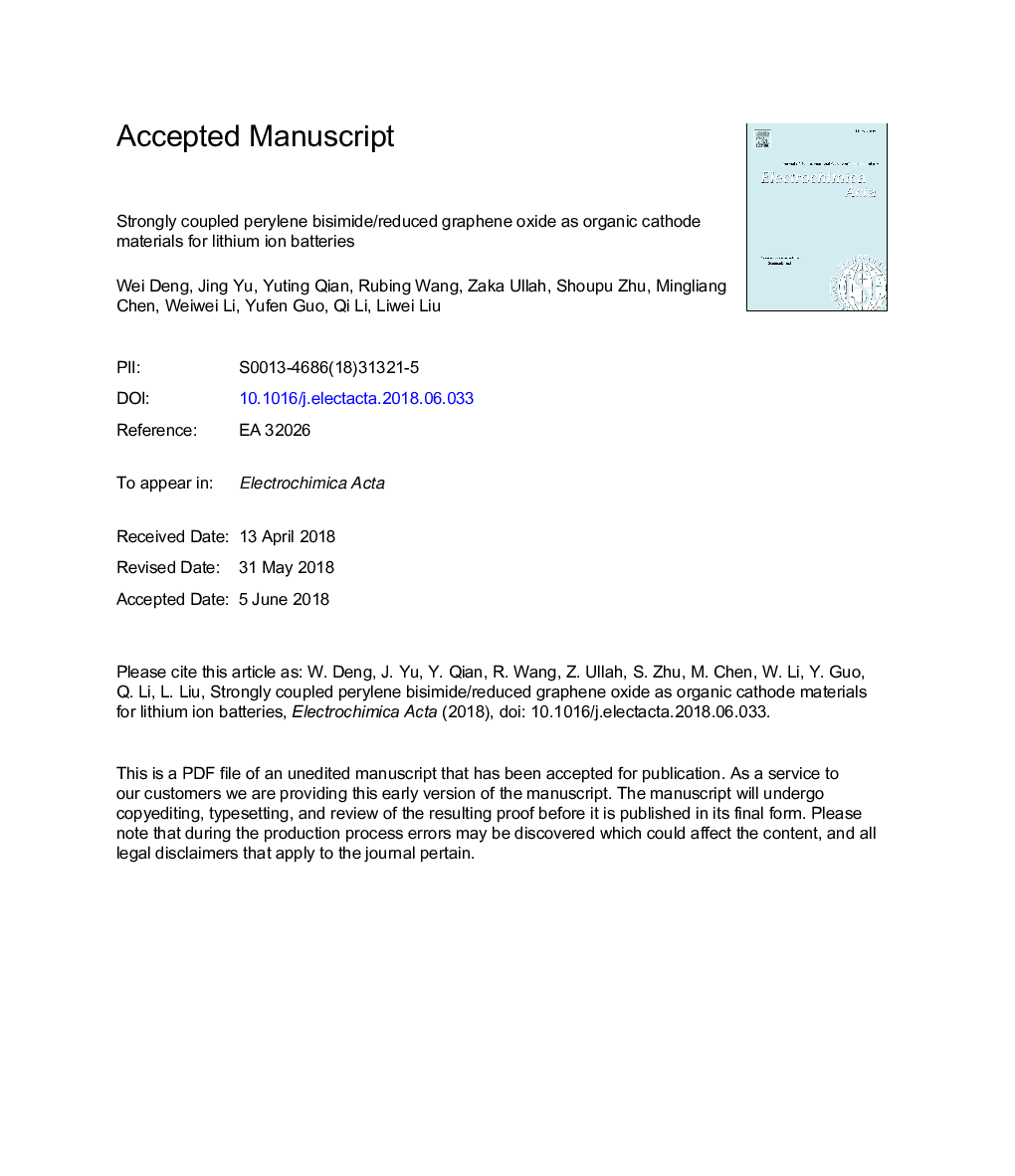| Article ID | Journal | Published Year | Pages | File Type |
|---|---|---|---|---|
| 6602114 | Electrochimica Acta | 2018 | 21 Pages |
Abstract
Organic cathode materials have owned wide range of research interests for lithium ion batteries (LIBs) owing to their higher theoretical storage capacities, safety advantage, desirable fabrication at molecular level and significant sustainability. However, the dissolution of active materials into electrolyte results in short cycle life and low rate capacity which are inevitable obstacles to the industrialization. The organic species in carbon materials like active carbon, carbon nanotubes and graphene, cannot be stabilized in electrolytes due to their weak interactions. Here, we report a novel organic cathode design to fabricate long-cycle life LIBs. The organic cathode relies on the ionic interactions between positively charged N,Nâ²-bis(2-N,N-dimethylaminoethyl)-3,4,9,10-perylenebis(dicarboximides) (PDI) and negatively charged graphene oxide (GO). In this design, the carbon matrices can load significant amount of organic molecules and can develop the interactions with electrolytes for a long time. The exclusive design can assemble the organic PDI LIBs with reversible capacity higher than 81â¯mAâ¯hâ¯g-1 with excellent cyclability at 25â¯mAâ¯gâ1. Moreover, the reversible capacity is sustained up to 28.4â¯mAâ¯hâ¯g-1 at a higher current rate 500â¯mAâ¯hâ¯g-1. The current investigations confirmed that the proposed strategy can be effective for hundreds of organic materials which have been ignored in past owing to their poor cyclability, and now these can be reinvestigated under the consideration of ionic interactions.
Related Topics
Physical Sciences and Engineering
Chemical Engineering
Chemical Engineering (General)
Authors
Wei Deng, Jing Yu, Yuting Qian, Rubing Wang, Zaka Ullah, Shoupu Zhu, Mingliang Chen, Weiwei Li, Yufen Guo, Qi Li, Liwei Liu,
